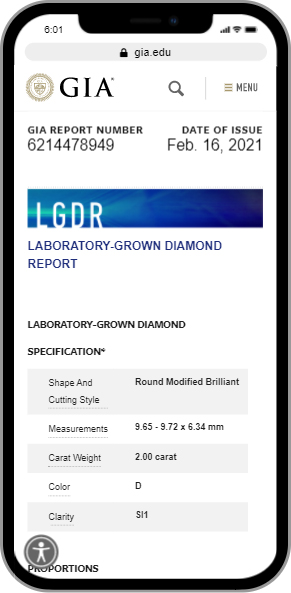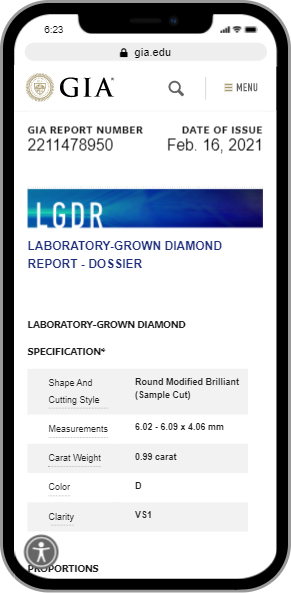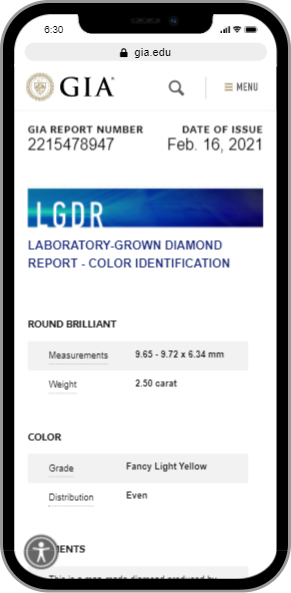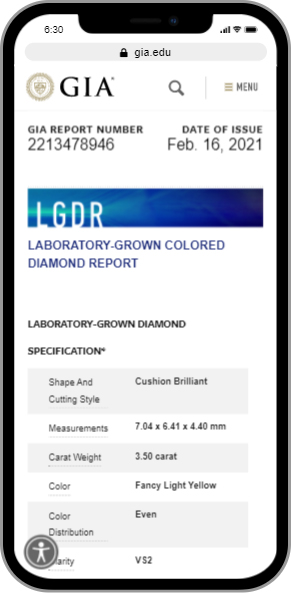The Improved LGDR - Dossier

The newly revised Laboratory-Grown Diamond Report – Dossier has been improved to meet market needs. By removing the post-growth treatment and growth type options, the streamlined report will now cost less while maintaining the vital data and high quality you expect. In addition, we have increased the maximum carat weight for the report to 9.99 carats. In Surat the LGDR-Dossier is available for stones up to 3.99 carats. The Laboratory-Grown Diamond Report will continue to offer growth method and post-growth treatment options.
The Full 4Cs
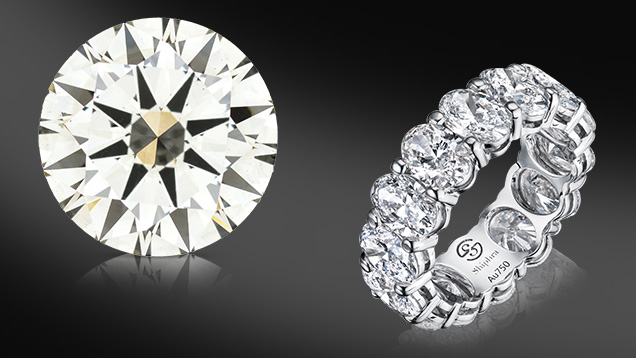
GIA scientists evaluate each laboratory-grown diamond using the 4Cs, a standard of evaluation created by GIA and implemented all over the world, meaning our scientists grade each laboratory-grown diamond with the same meticulous care as natural diamonds. Our updated Laboratory-Grown Diamond Reports provide detailed color and clarity specifications on each diamond, zoning in with greater insight than ever before and allowing consumers to make crystal clear decisions.
Your laboratory-grown diamonds deserve the attention of our expert scientists. Our new Laboratory-Grown Diamond Reports serve up the brilliance you expect from the brand you trust.
Growth Method
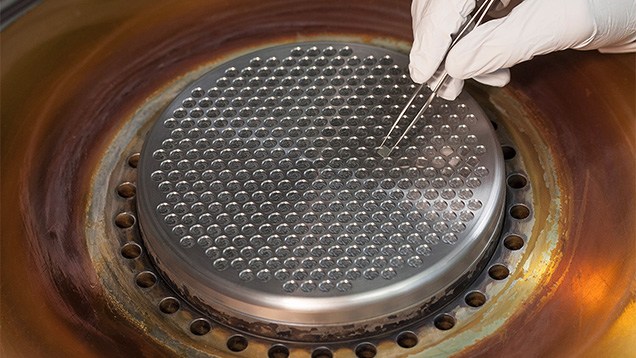
Determining diamond identity, growth method and treatment requires incredible scientific expertise. At GIA, we are uniquely positioned to provide this information due to our decades of diamond research, the knowledge we have gained from grading millions of diamonds a year and the information we collect from growing CVD diamonds for research purposes in-house.
Using spectroscopy and other advanced testing methods, GIA scientists can determine how a diamond was grown—through the high-pressure, high-temperature (HPHT) method or the chemical vapor deposition (CVD) method. This information is then provided on our updated Laboratory-Grown Diamond Reports.
In addition to stating a diamond’s growth method, the Laboratory-Grown Diamond Reports also state post-growth treatment. The HPHT method can be used to treat the color of laboratory-grown diamonds, turning them colorless or a fancy color such as pink, blue, green or yellow.
Digital First
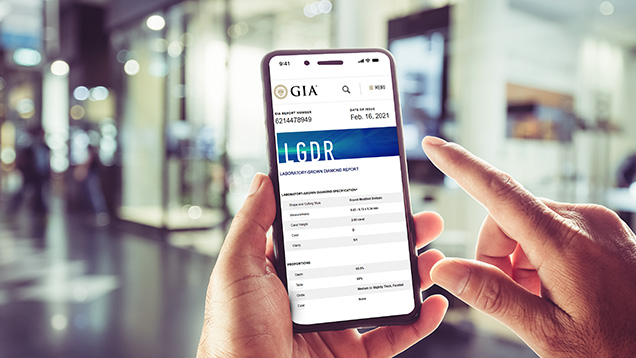
Our updated Laboratory-Grown Diamond Reports are entirely digital. Whether through the GIA app or Report Check, diamond information can be viewed anytime, anywhere at consumers’ convenience in a secure way.
Digital reports ensure sustainability as well as improve security by storing data in a method that is not prone to loss or damage. We issue millions of reports every year. Transitioning away from paper reports means saving millions of sheets of paper and numerous trees and conserving energy that would otherwise have gone towards transporting the reports. As we continue to advance in technology and consumer protection, we promise that no matter the medium – paper or digital – we will continue to deliver vital gem data and knowledge to the clients that need them.
Laboratory-grown diamonds and natural diamonds are gems with vastly different creation processes and stories, and consumers purchase each with different considerations in mind. At GIA, we protect consumers by providing comprehensive, informative reports for both natural and laboratory-grown diamonds.
gia.edu
gia.edu

gia.edu
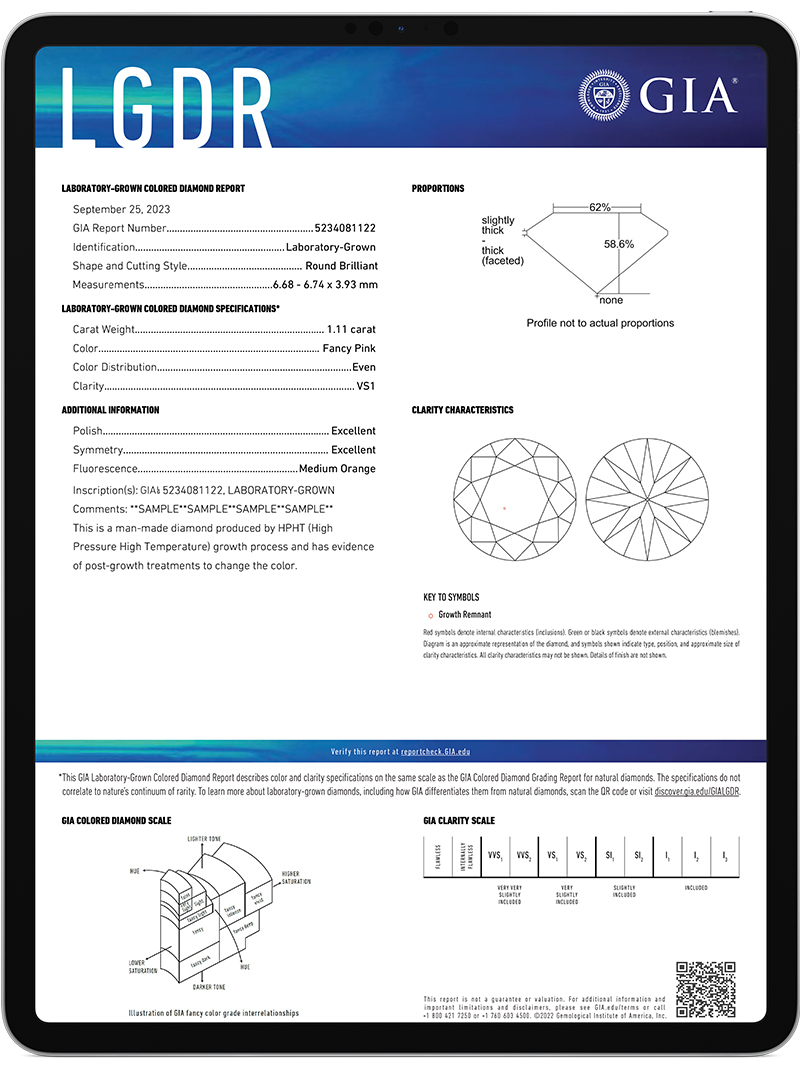
gia.edu
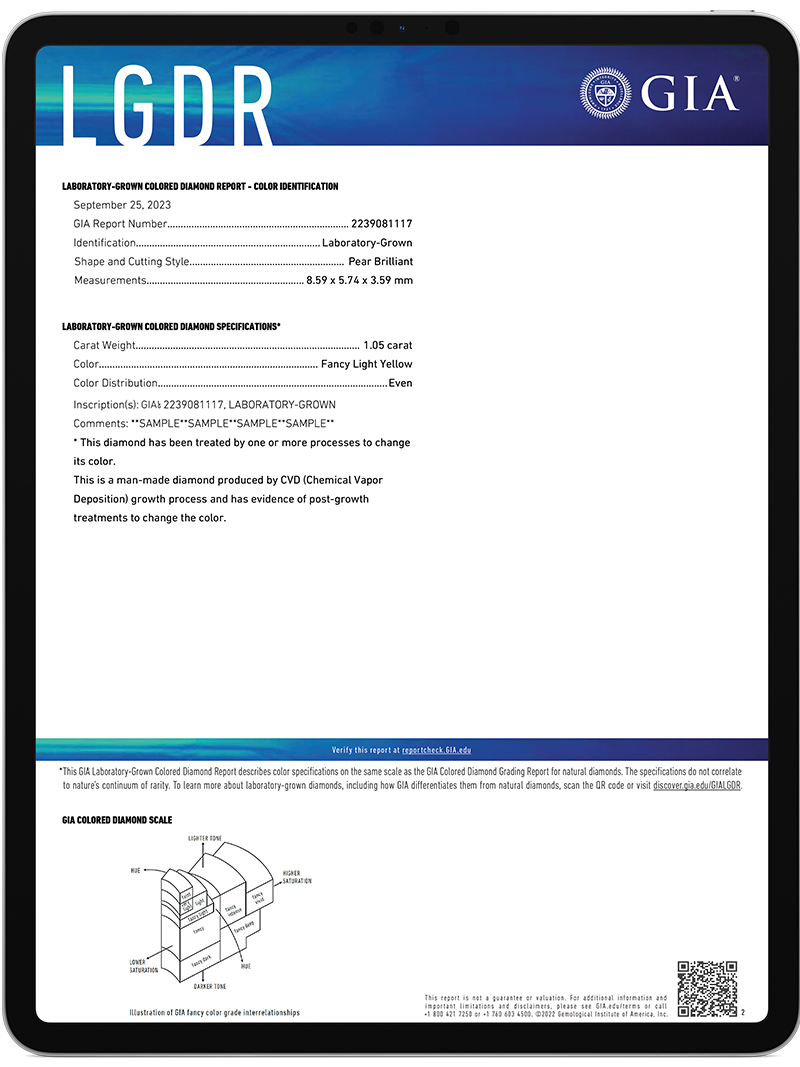
Telling the Laboratory-Grown Diamond Story
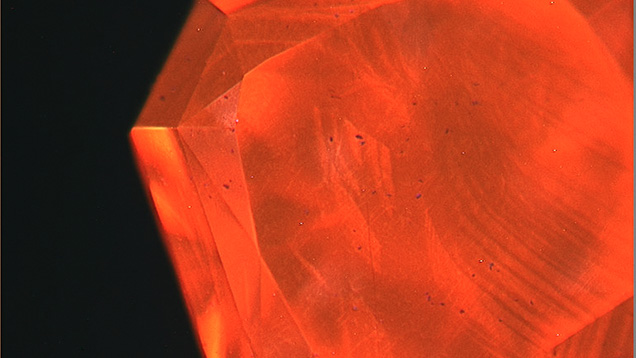
Can your sales team tell your customers about the differences between laboratory-grown and natural diamonds? From info-rich brochures to infographics and an interactive landing page. GIA offers a wealth of resources to help you and your sales staff tell the story of laboratory-grown diamonds.
We also offer both introductory and advanced Continuing Education seminars on laboratory-grown diamonds so that you and your sales team are nothing short of brilliant. Learn how laboratory-grown diamonds were created, their social impact, and how to tell them apart from natural diamonds. Also learn about GIA’s Laboratory-Grown Diamond Report and how GIA scientists grade laboratory-grown diamonds.
Visit the GIA store to explore LGDR-related products, including our new GIA-branded laboratory-grown diamond display case. Want to be able to differentiate between laboratory-grown and natural diamonds right in your store? Explore the GIA iD100, a cutting-edge diamond testing device that is perfect for client demonstrations.
Are you a jewelry retailer? GIA offers brochures, counter displays, instruments and downloadable resources to help you and your sales associates educate consumers about laboratory-grown diamonds.
Want more? Shop all GIA laboratory-grown diamond tools.
Shop NowContact Us
Want to learn more about LGDR by GIA? Contact us and we will get back to you soon.

